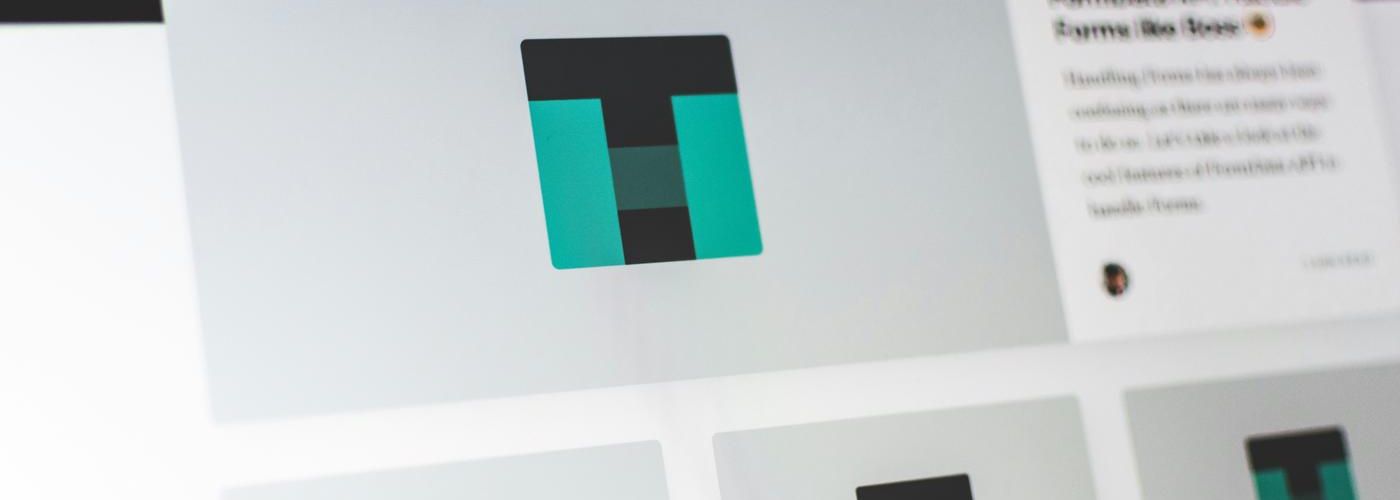
Starter Structure For Optimizing Your Landing Pages For Conversion and SEO — Leverage This Framework to Attract & Amplify Leads & Sales
Building a landing page and don't know where to start or how to structure it? I've got some simple and powerful data-backed structures for you to leverage in your next landing page project.
Is there such a thing as a perfect landing page? Probably not. But, that won't stop us from making highlight-effective landing pages instead.
For clients, I've built and directed numerous landing page projects. From these many experiences, I've developed a useful landing page structure to maximize engagement, email collection, and sales transactions. Because I'm also an SEO specialist, I inject those layers into the framework so that you can also get it ranked on Google and drive organic traffic your way.
I've grouped this blog post into the following five sections.
- Universal Landing Page Elements
- Short Form Content Section
- Long-Form Content Section
- Full Data Ranking of Landing Page Elements
- Lead Magnets & Topic Clusters
What's great about this structure, is that I've got data, from client experiments we've run on the short and long-form content, so I'll be including that throughout the post as well.
Universal Elements (Including Some SEO Pieces)
- The Top 3: For my clients and in my SEO training, I encourage marketers to create an H1 Headline, optimal URL, & title tags that are all unique variations of each other and optimized for search engine optimization.
- Headers: Make sure to include headers throughout the page, nested with H2, H3, H4, H5, and H6. This might sound obvious to most marketers, but you'd be surprised how many times it gets missed by agencies working on website redesign projects.
- Videos: Include one or more videos since not everyone likes to, or is willing to read.
- Limit Distractions: If possible, limit navigational (menu and header) elements on the landing page.
- Mobile Friendly: This should go without saying, but make sure the page is responsive, so it's easy to view on smaller devices.
- Meta description: Include a meta description. These are less important so you can usually have ChatGPT or Google Gemini generate them.

Short & Long Content Sections on Your Landing Page
Break up your page into two parts. The short form section and the long form section. They can be combined into one single page or be separate pages depending on your strategic objectives and limitations.
Think of the connection between the short and long sections like a journalistic article on a news site.
The headline is key, the subheadline is secondary, and the first few sentences have the key information. For those who want more details, they can keep reading.
So, the short section aims to speak to the user who only needs the top-line core message and call to action. We want to give them enough information to make a decision now. For those who need to be educated or inspired, they can scroll down for the long-form content.
This allows us to communicate to both audiences without frustrating either one.
Short Form Content Header Section
The landing page should have a short concise header. There are two layers of this header. The first is based on an insight shared on Twitter (X) by David C. Baker.
This is the direction I've leveraged for the main headline.
What do you do and who do you do it for?
If it's a product or service, simply narrow in the question. What does this service or product do and who does it do it for?
You want to make the connection to the user, as to whether this is relevant and urgent to them, or not.
The second layer includes that piece as well as some others. The following header framework is based on a framework developed by UDEMY for selling courses. They call it the perfect promo. You can check out their explanation for it here.
After you clarify the offer within your company and present the product or service branding, in your primary headline, here's the structure for the rest of the section.
- Credibility: Why are you credible? Establish that credibility early.
- Benefits: Describe the benefits and what will be accomplished after the user accepts the offer. What do they get from it?
- Structure: Explain how the product/service is designed in a list.
- Perfect Client: Describe the ideal customer. Who are you helping? This is best written if it's written from their point of view.
- Thank + CTA: Express your gratitude for them engaging in the content and give them a clear call to action for their next step. If it's a micro-easy step, even better.
My recommendation is to include the preceding framework in both written form and as a short video. As you'll see from the data below, the video is transformative of results.
Data Insights: Short Form Header Experiment Results
We ran tests across 5 different landing pages and tested a variety of variations across 14,139 sessions. The variations included a short header, a short video, the long-form copy, and a long-form video (Video Sales Letter / VSL).
Here are some things we discovered.
- The short header had the second-lowest bounce rate.
The test pages received different numbers of sessions so I took the revenue and divided it by the number of sessions to get revenue per session.
- The Short header got 23 cents per session.
- If the short header also included a short video, the revenue per session went up to 54 cents per session but the bounce rate was higher, the highest of the four variation variables. The bounce rate going higher didn't seem to be a problem because it seemed like those extra bounces were people going to buy the product.
So while a short header is good, the sweet spot is a short header with that UDEMY style short video.

Long-Form Content Section
What about the long-form content? I like long-form content, for SEO reasons, but let's work through the structure and then we'll look at what the data has to tell us.
1,200 words is a good length for maximizing readability and search engine indexing. For the content structure, I recommend the PASTOR framework by Ray Edwards or something like it.
Here's the PASTOR framework breakdown.
- Problem
- Amplify
- Story/Solution
- Transformation/Testimony
- Offer
- Response
The idea is to structure the content of the page in these sections and in that order.
This framework is designed to first connect with the user about the problem they are facing, which should be relevant since it is a problem. Now that you have their attention, work your way through the framework.
I won't expand on the framework further, but if you are interested, you can dive deeper here if you'd like to get a better grasp.
Google likes it if you include images, at least one for every 3-400 words, or the top of each section. Use images that communicate and reinforce the section of content to follow for maximum impact.
I also recommend embedding square and horizontal graphics for social media sharing on the main channels and square and vertical images for Pinterest.
And finally, include clear and repetitive Calls to Action. I like to see at least three throughout the page. Make it easy for people to take the next step. By also including it throughout the page, you provide an off-ramp for people who are ready to move forward (as opposed to frustrating them by forcing them to the end).
Data Insights: Long-Form Header Experiment Results
In the testing we ran, he's what we discovered about the long-form content.
- The long-form copy had the lowest revenue per session of 19 cents.
- If a long-form video was added, it increased the revenue per session to 26 cents.
It seems like if you're going to use long-form written copy, you want to include a long video too. I recommend embedding the long-form video at the beginning of the long-form text.
One other important factor for including long-form written content, despite its lower performance, is the search engine optimization (SEO) value. It seems to me that if you have a short-form header with a short video and a long-form message, you can both drive a large volume of traffic and convert it. Where it makes sense not to combine them, have both as separate pages instead.
Full Data Ranking
Here's the full ordering of effectiveness based on our small test of 14k sessions.
Revenue Per Session
- Short video = 54 cents per session
- Long video = 26 cents per session
- Short header = 23 cents per session
- Long copy = 19 cents per session
Bounce Rate
- Long video = 85.74%
- Short header = 86.43%
- Long copy = 86.47
- Short video = 91.70%

Lead Magnets & Topic Clusters
Whether you are selling something or not, I recommend having a compelling Lead Magnet. Give people an incentive to give you their email by filling out a form.
If the landing page is for the book, include a form to get the first chapter for free. If you don't want to diminish the sales message, you can add this freebie after the short section or even somewhere in the long section.
If you have highly relevant paid or affiliate traffic being driven to the page, you may be able to drive people straight to purchasing.
Make the page part of a topic cluster, which is a collection of blogs that direct people to the landing page. This is great for increasing the Google rankings and clicks for the topic cluster keywords. If it is part of a topic cluster, you can leverage that content cluster's call-to-action and lead magnet on the page. And you can drive traffic to the landing page from these other pieces of content.
Wrapping Up
Having a landing page is better than not having one. But if you leverage this short and long-form content framework for your landing page, you can make it much more effective than something you build ad-hoc.
The most effective landing pages will be those that build something on a framework, like I've provided, and then continue to test and refine it until it dominates in the metric that moves your company's needle in the right direction.
Social Media Graphics For Sharing
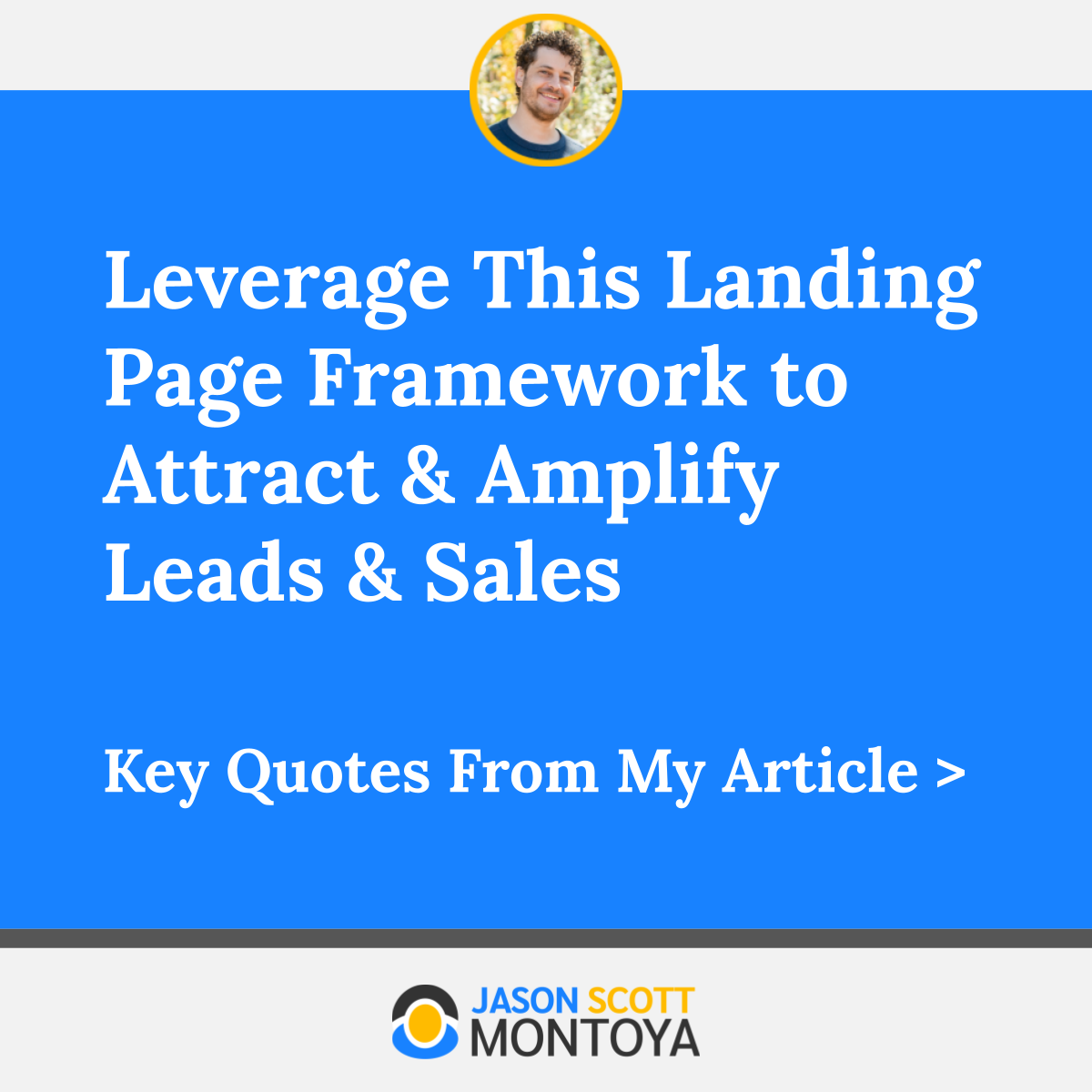
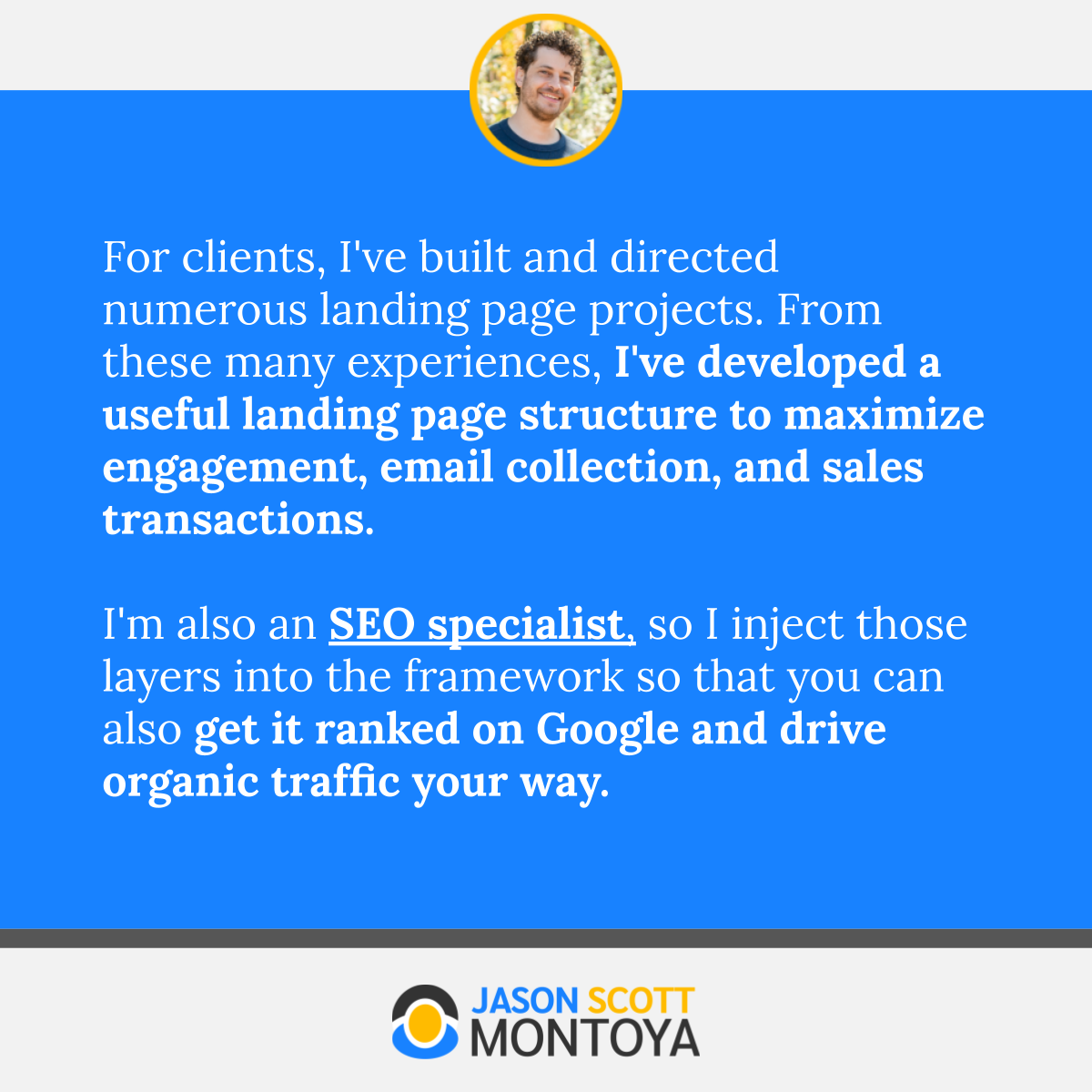
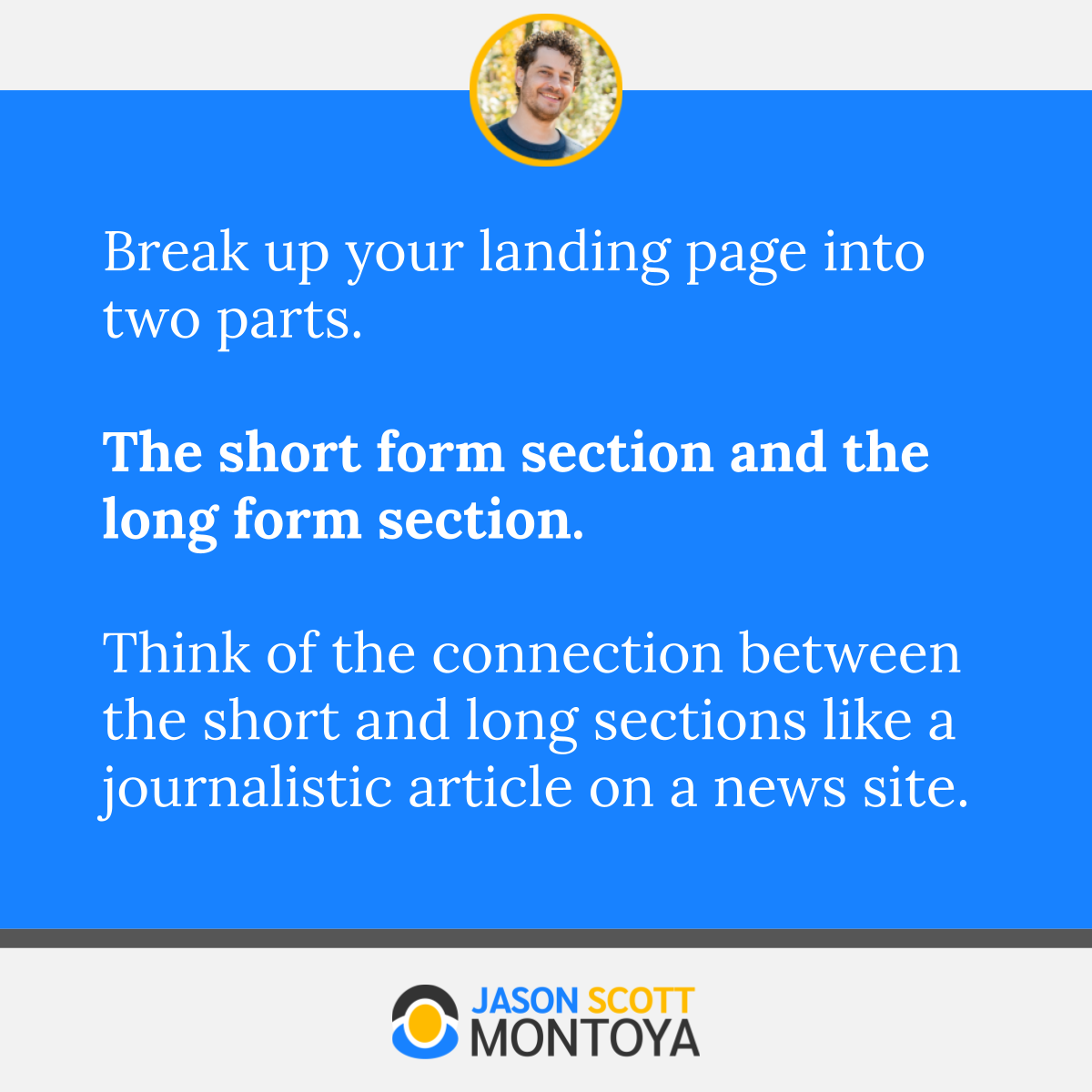
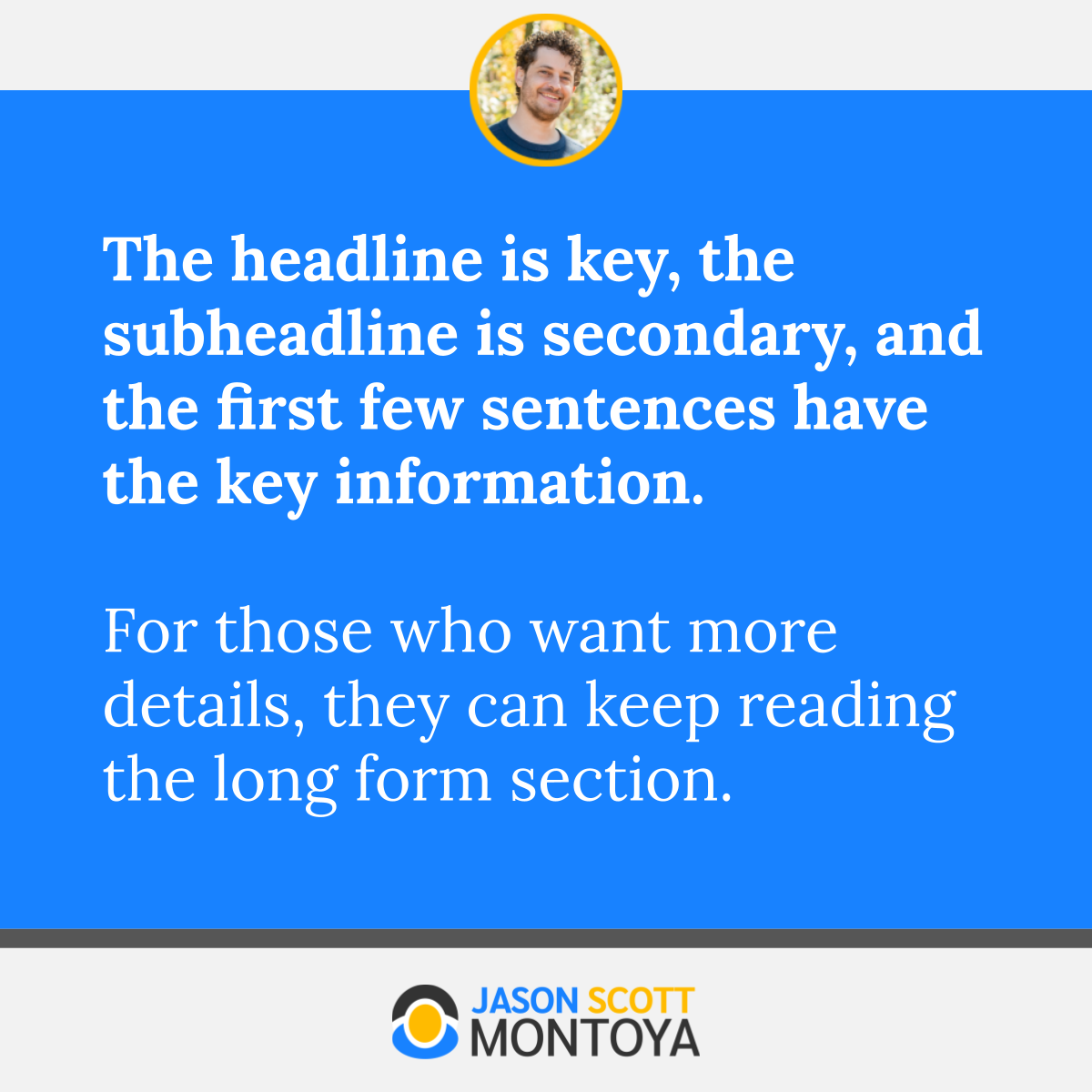
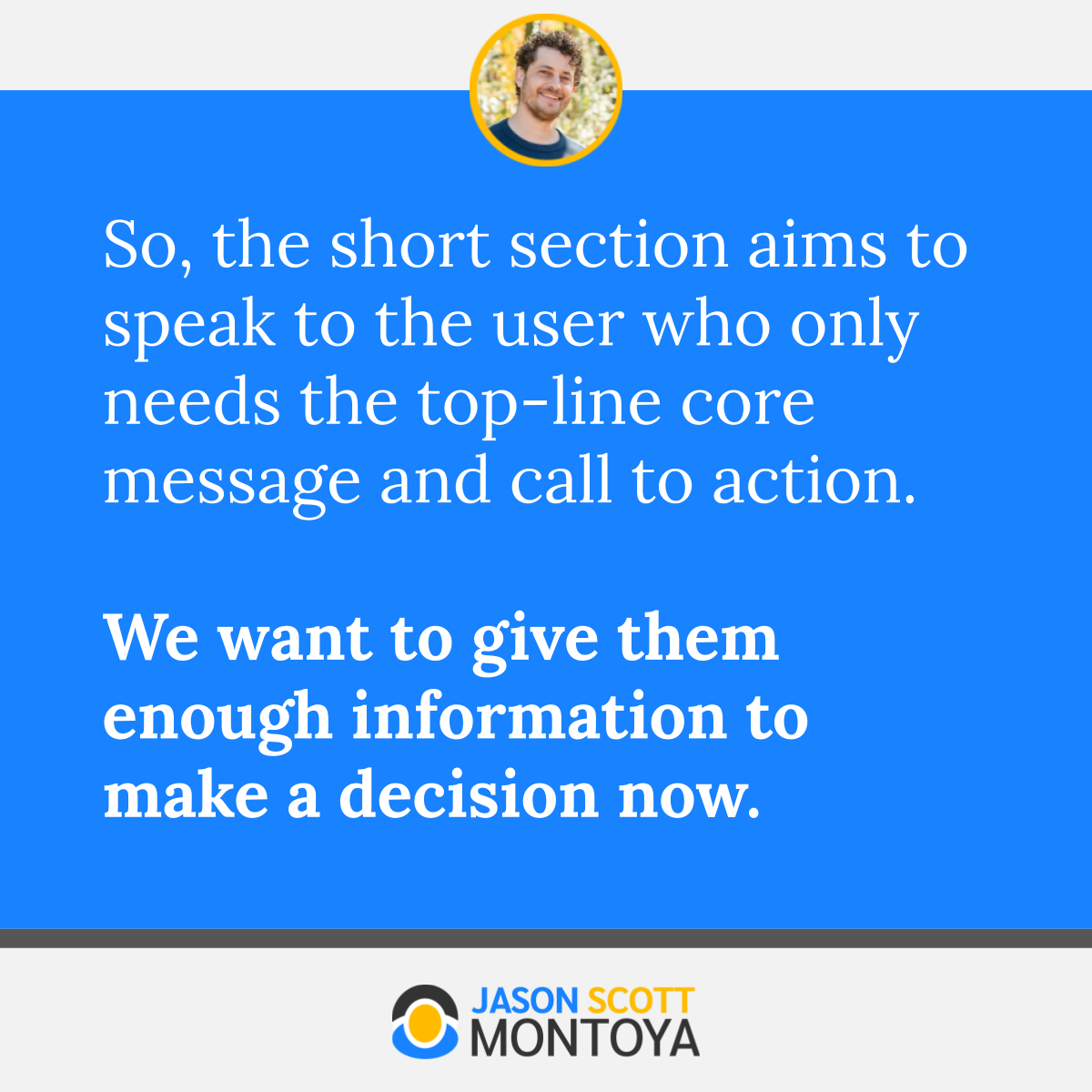
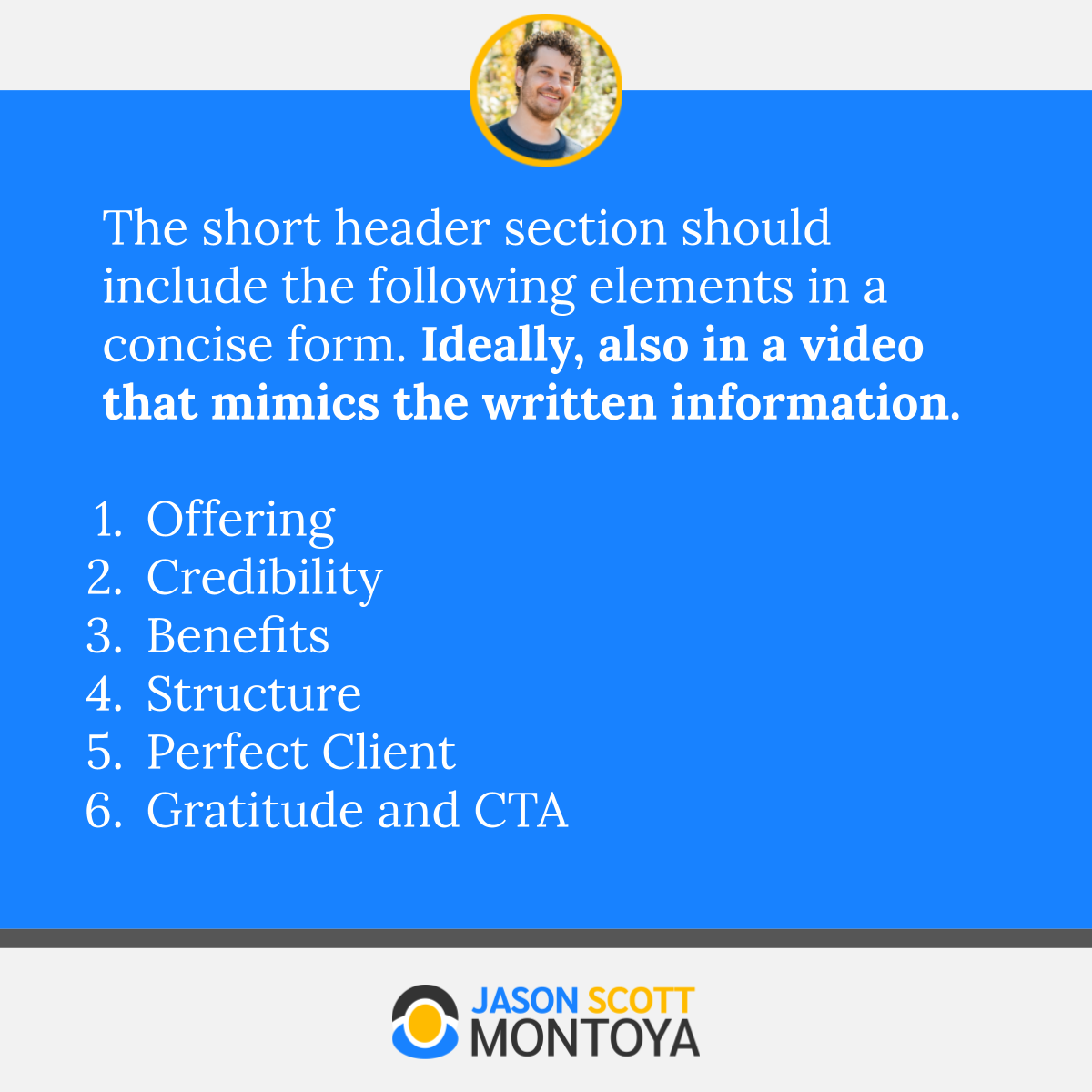
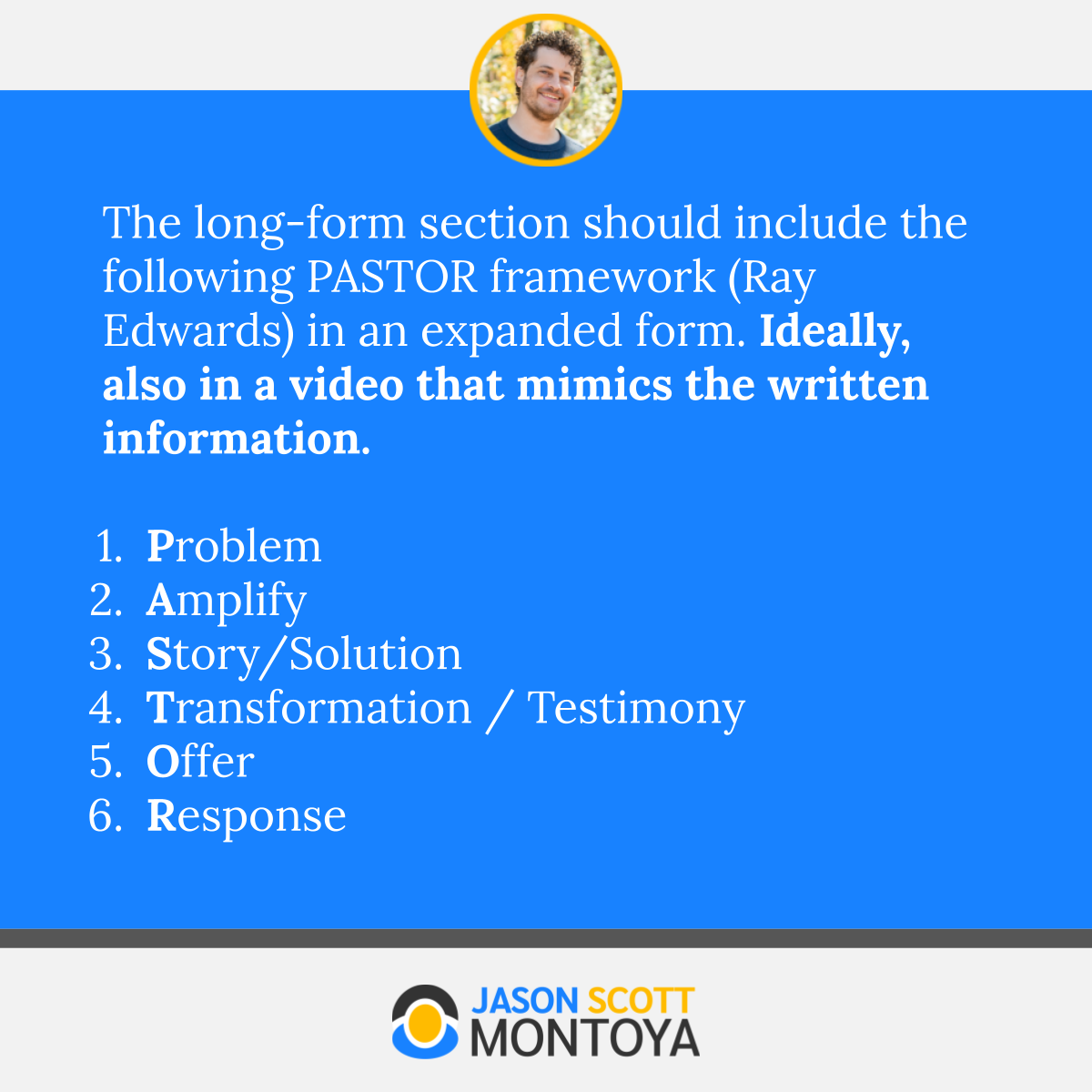
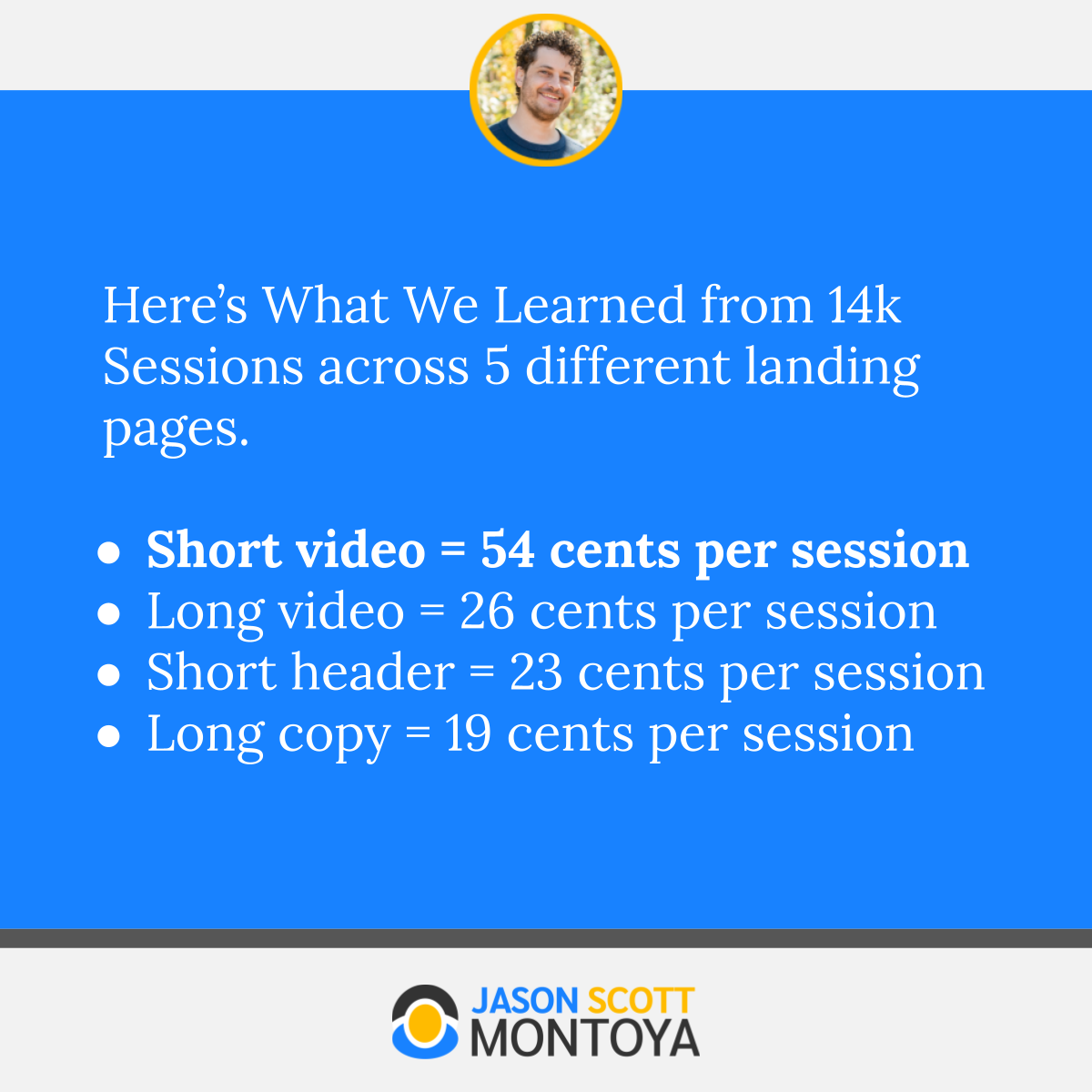
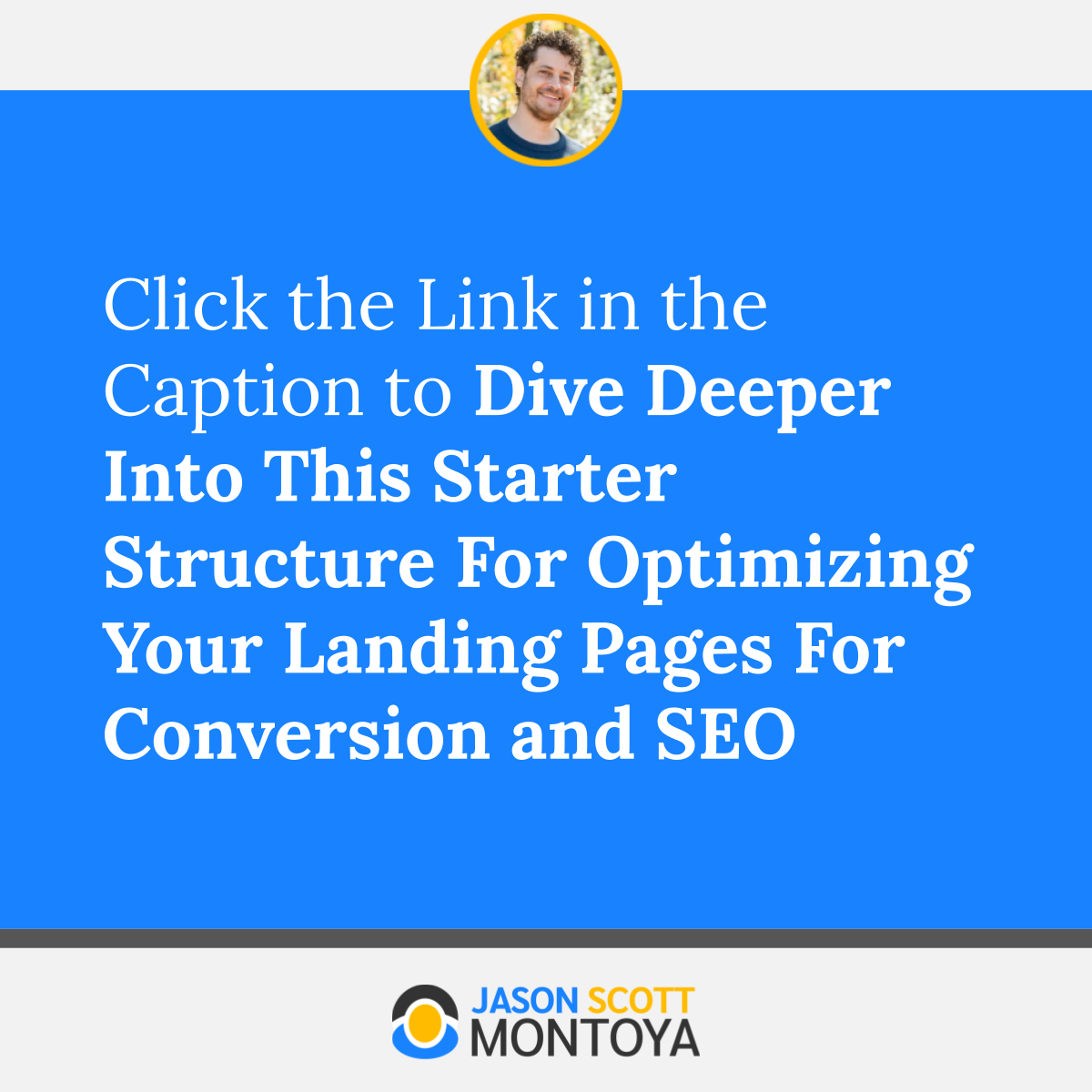
Search Engine Optimization (SEO)
- Created on .
- Last updated on .